Here’s our DIY TAKAYAMA TRAVEL GUIDE BLOG with hotel and tour recommendations, and a sample TAKAYAMA ITINERARY to help you plan your next Japan trip!
Gifu Prefecture is fondly called the Heartland of Japan because of its location and, amazingly, its shape. Right at its core is the city of Takayama. You could say that Takayama is the heart of the heart of Japan. And if that alone doesn’t strike a romantic chord in you, brace yourself. Takayama is quite the charmer. It does not woo. It does not beg for attention. It just stands there in the cold. Beating quietly. Staying unnoticed. But beware: when you give this heart a chance, it’s gonna steal yours just like that.
I know. Takayama still has mine.
Understanding Hida-Takayama
Because there are many other places in Japan called Takayama, many refer to Gifu’s Takayama as Hida-Takayama, in reference to the old Hida Province.
Takayama lives up to its name “tall mountain”. Perched high above the mountains of Central Japan, it is enclosed and guarded by the Northern Alps. The isolation did the mountain city good as it established a unique fusion of culture molded and influenced by its very rich history.
Takayama is one of the major cities in Gifu offering various transport services, making it an ideal transportation hub and the jump-off point to other nearby tourist attractions.
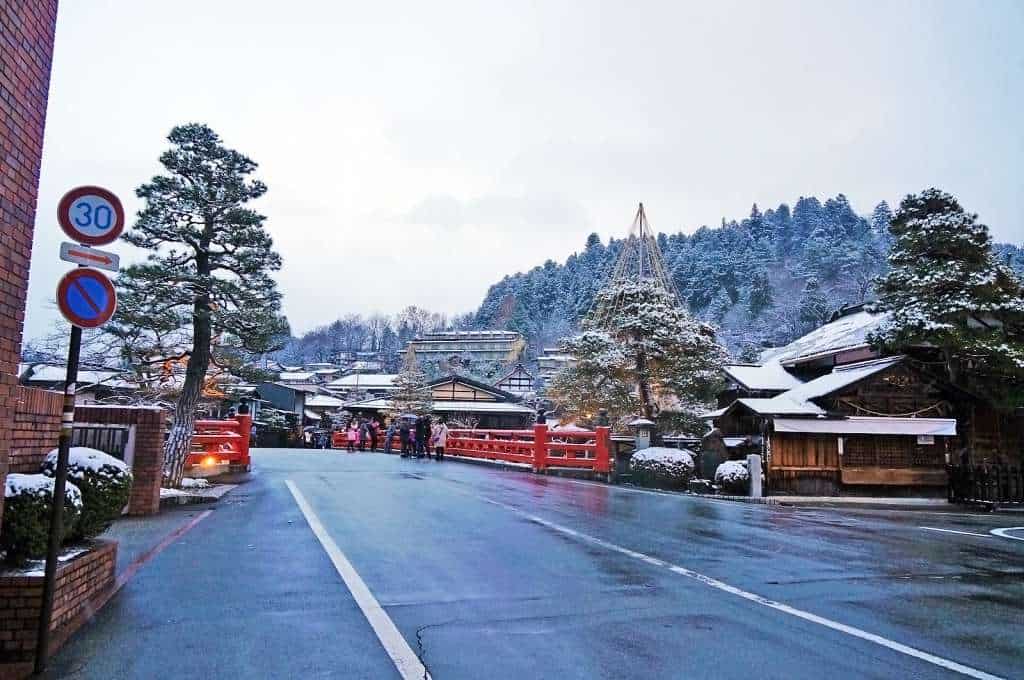
The old merchant houses reflect the flourishing livelihood and economy of the city during the Edo Period under the Tokugawa shogunate rule. These longstanding traditional structures and architecture are reminiscent of Kyoto, prompting many to call the city “Little Kyoto”. The rich history and culture groomed Takayama to become one of the tourist destinations in Gifu, contributing largely to its economy, besides carpentry and agriculture.
The city is also in the process of making the community senior-friendly and tourist-friendly with efforts such as building wheelchair-ready restrooms, installing benches, constructing bump-free roads, and improving communication materials and directional signs for tourists and visitors.
Lastly, the city of Takayama had been awarded by the prestigious tour guidebook Michelin three-star rating twice for its old streets or Sanmachi and the biannual festivals with the traditional floats. (Reference: 2007 Michelin Voyager Pratique Japon; 2009 Michelin Green Guide Japon)
Other information you need to know:
- Language: Japanese (Nihongo). The majority of the locals seldom speak English, but most of the signs and other tourist promotional materials have English translations.
- Currency: Japanese Yen (JPY, ¥). JPY 1000 is around USD 9, EUR 8, PHP 465 (as of March 2020).
- Modes of payment: Most establishments prefer cash payment, but many of them also accept credit card transactions.
- Electricity Info: 100V. Plugs have two flat pins.
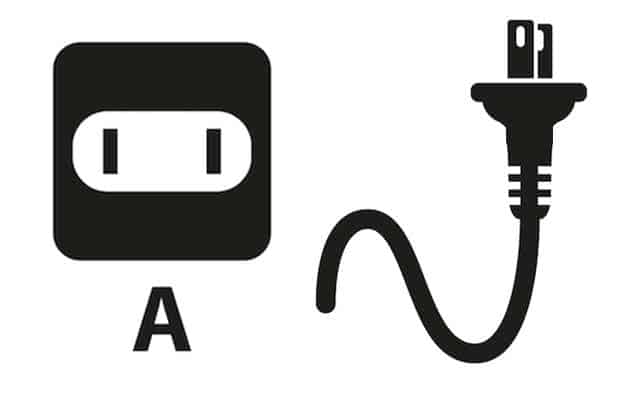
How to Get to Hida-Takayama
The nearest international airport is the Toyama Airport, but there are no direct flights from Manila to Toyama. The nearest major international airport with direct flights from Manila is Chubu Centrair International Airport via Nagoya. In addition, fares offered by different company airlines are cheaper.
From Manila
Chubu Centrair International Airport is a first-class multi-awarded airport (Airports Council International and Skytrax). It serves Central Japan area including Nagoya, its principal city. Several airline companies offer direct flights from Manila to Nagoya via Chubu Airport. Travel time is four hours and 15 minutes.
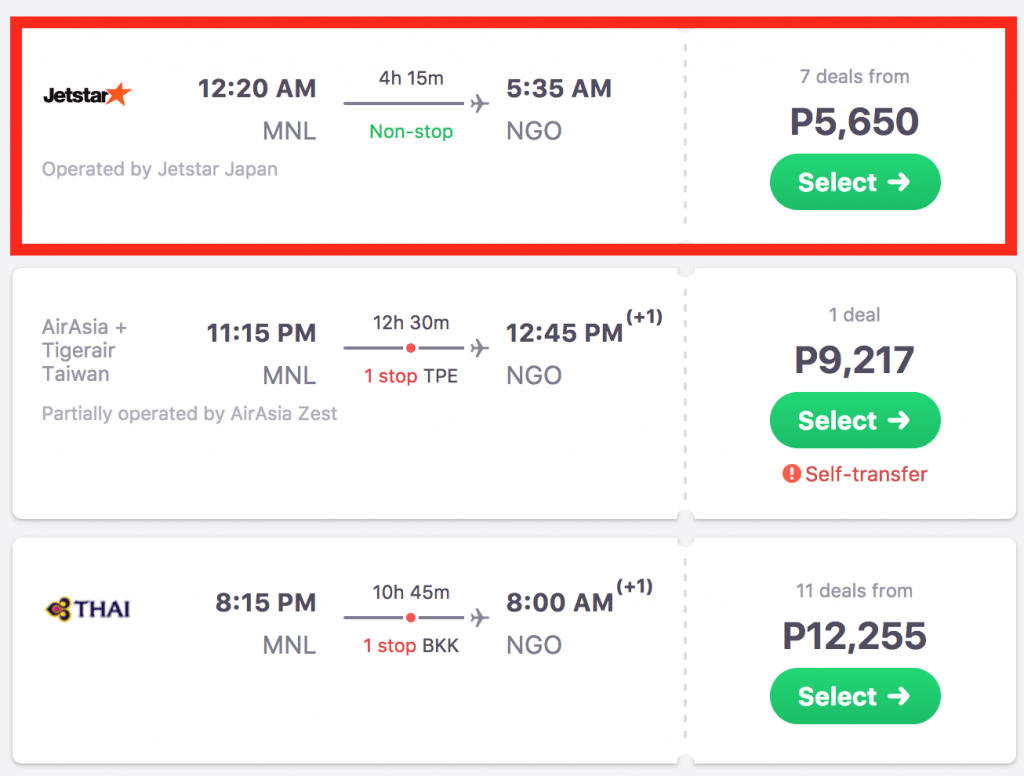
Nagoya is the capital of Aichi Prefecture and is also the usual jump-off point to different destinations in Central Japan, providing a good number of transportation terminals.
Note: Some of the train lines, especially Shinkansen, collect seat fees on top of the train fares.
From Chubu Airport
- From the airport, you can walk to Chubu Centrair International Airport Station of Meitetsu Line.
- Take the Meitetsu-Limited Express train bound for Meitetsu Nagoya Station. Travel Time: Approx. 30 minutes. Fare: ¥890 + seat fee.
- Alight at Nagoya Station. Meitetsu Nagoya Station and Meitetsu Bus Center are both located at Meitetsu Department Building beside JR Nagoya Station.
- Go to JR Nagoya Station.
- Take the JR Limited Express Wide View Hida train. Travel Time: 2 hours, 20 minutes. Fare: ¥3,410. Seat Fee: ¥2,200 (unreserved seat), ¥2,930 (reserved seat).
- Alight at JR Takayama Station.
From Nagoya
BY TRAIN
- Go to JR Nagoya Station.
- Take the JR Limited Express Wide View Hida train.
- Alight at JR Takayama Station.
Travel Time: 2 hours 20 minutes
Fare: ¥3,410 + Seat Fee
Seat Fee: ¥2,200 (Unreserved); ¥2,930 (Reserved)
BY BUS
- Go to Meitetsu Bus Center (located at Meitetsu Department Building next to JR Nagoya Station).
- Take a bus via Takayama-Nagoya Line (Meitetsu Bus, Nohi Bus, or JR Tokai Bus)
- Alight at Takayama Hida Bus Center.
Travel Time: 2 hours 40 minutes
Fare: ¥3,100
From Kyoto
BY TRAIN
- From Kyoto Station, take the JR Tokaido Shinkansen train (preferably Hikari if you have JR Pass) to JR Nagoya Station.
- From JR Nagoya Station, transfer to JR Limited Express Wide View Hida train going to Takayama.
- Alight at JR Takayama Station.
Travel Time: 3 hours
Fare: ¥5,720 + Seat Fees
Kyoto to Nagoya Seat Fee: ¥2,530 (Unreserved); ¥3,470 (Reserved)
Nagoya to Takayama Seat Fee: ¥1,100 (Unreserved); ¥1,460 (Reserved)
BY BUS
- Go to Kyoto Bus Station (Hachijoguchi).
- From Kyoto Bus Station (Hachijoguchi), take a Nohi bus going to Takayama.
- Alight at Takayama Hida Bus Center.
Travel Time: 3 hours, 30 minutes
Fare: ¥4,500
From Osaka
BY TRAIN
- From Shin-Osaka Station, take the JR Tokaido Shinkansen train (preferably Hikari if you have JR Pass) to JR Nagoya Station.
- From JR Nagoya Station, transfer to JR Limited Express Wide View Hida train going to Takayama.
- Alight at JR Takayama Station.
Travel Time: 3 hours
Fare: ¥6,380 + Seat Fees
Shin-Osaka to Nagoya Seat Fee: ¥2,530 (Unreserved); ¥3,470 (Reserved)
Nagoya to Takayama Seat Fee: ¥1,100 (Unreserved); ¥1,460 (Reserved)
BY BUS
- Go to Osaka Bus Station (Higashiumeda).
- From Osaka Station (Higashiumeda), take a Nohi bus going to Takayama.
- Alight at Takayama Hida Bus Center.
Travel Time: 4 hours
Fare: ¥5,000
From Tokyo
BY TRAIN
- From Tokyo Station, take a JR Tokaido Shinkansen train (preferably Hikari if you have JR Pass) to JR Nagoya Station.
- From JR Nagoya Station, transfer to JR Limited Express Wide View Hida train going to Takayama.
- Alight at JR Takayama Station.
Travel Time: 4 hours
Fare: ¥8,910 + Seat Fees
Tokyo to Nagoya Seat Fee: ¥4180 (Unreserved); ¥5,120 (Reserved)
Nagoya to Takayama Seat Fee: ¥1,100 (Unreserved); ¥1,460 (Reserved)
BY BUS
- Go to Shinjuku Bus Terminal.
- Take a Nohi bus or Keio bus going directly to Takayama.
- Alight at Takayama Hida Bus Center.
Travel Time: 5 hours, 30 minutes
Fare: ¥6,500
Where to Stay in Hida-Takayama
There are numerous hotels, hostels, inns, and guesthouses in Takayama. You can even stay at a ryokan, but if you choose to spend a night or two, it’s recommended to do it in a rural setting or those near the hot springs, like in Okuhida. For the budget hotel, here are the top options under $60/night according to Agoda users as of March 2020.
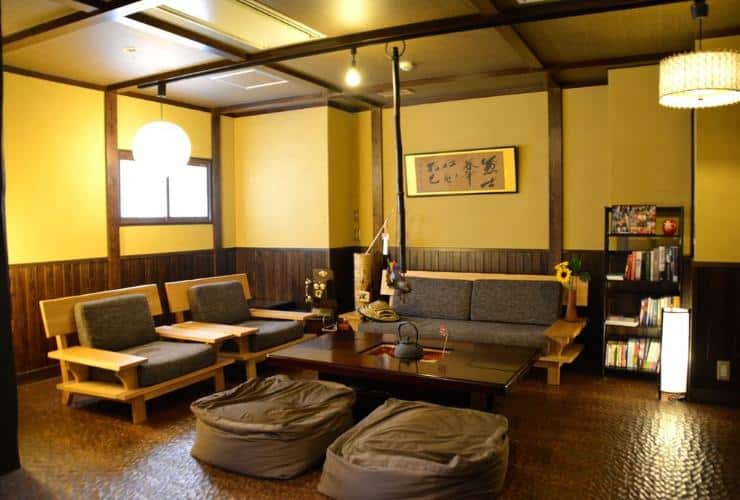
- K’s House Takayama – Quality Hostel. Check Rates & Availability! ✅
- Cup of Tea. Check Rates & Availability! ✅
- J-Hoppers Hida Takayama Guest House. Check Rates & Availability! ✅
- Sora-Ama Hostel. Check Rates & Availability! ✅
Search for more Takayama Hotels!
If you are willing to spend more on your accommodation and want to experience onsen bath at the same time but don’t have the luxury of time to travel to Okuhida, Hida Hotel Plaza boasts two communal onsen baths for those who want to relax amid the urban setting. For those who are not pressed for time and are also planning to go to Shinhotaka Ropeway in Okuhida, Hotel Hotaka is located just beside the Shinhotaka Ropeway’s Shinhotakaonsen Station; it’s actually less than a minute walk. The hotel has an open-air bath, separate onsen for men and women, and a barrier-free family bath.
Search for more: Takayama Hotels
Getting Around Hida-Takayama
JR Takayama Station and Takayama Hida Bus Center are conveniently located near the most famous old merchant houses or the old town, known as “Sanmachi”. From either spot, you can explore the city on foot as the popular attractions are mostly located in the city center. You also have the option to rent a bicycle from the Tourist Office and some hostels if you want to maximize your time (around ¥600 per day). Machinami Sightseeing Bus runs between Takayama Station and the Sanmachi every hour for ¥100 per ride (adult and children). Note that there’s no operation during weekends and holidays.
If you want to go a little bit further to Hida no Sato (Hida Folk Village) and Matsuri no Mori, you can also take the Sarubobo Sightseeing Bus for convenience. It runs every 20-50 minutes from Takayama Station to both destinations and back. The fare is ¥210 per ride for adults and ¥110 per ride for children.
- Machinami Bus Route: Takayama Bus Terminal / Takayama Station Hakusan Gate / Kusakabe Folk Museum / Takayama Historical Government House (Takayama Jinya) / Back to Takayama Bus Terminal
- Sarubobo Bus Route: Takayama Bus Terminal / Hida Folk Village / Matsuri no Mori / Hida Folk Village / Back to Takayama Bus Terminal
Things to Do in Hida-Takayama
The Old Merchant Houses (Sanmachi or Old Town)
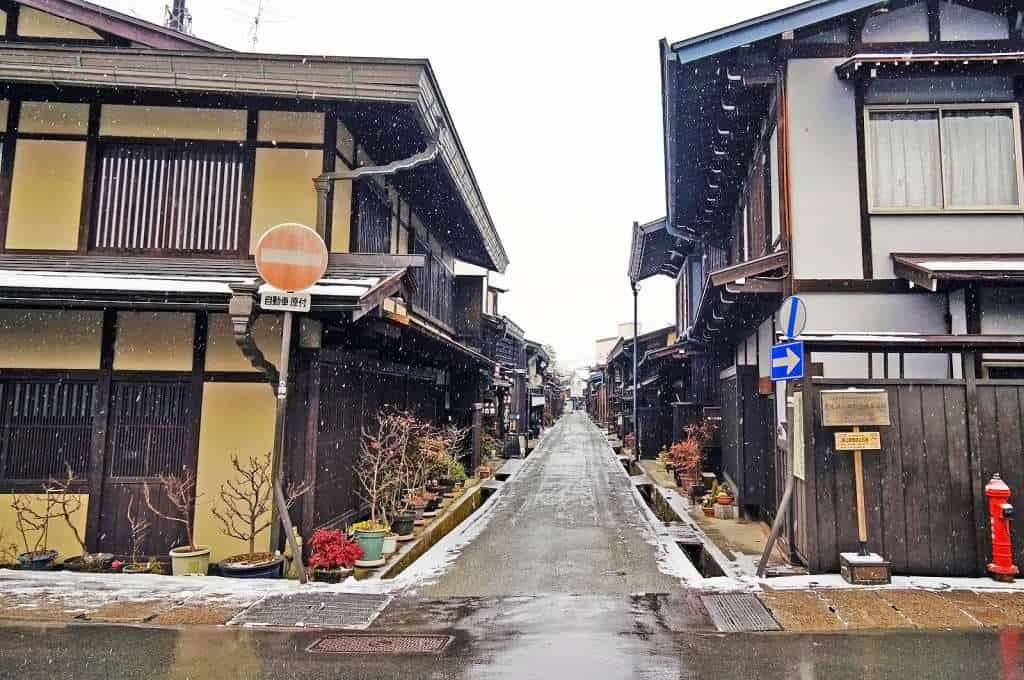
Takayama’s main charm is its well-preserved old merchant houses that mirror the olden castle town days of Edo Period. It’s very accessible from the train station; in fact, it will only take 10 minutes on foot to reach the old town from Takayama Station. Enjoy exploring the shops and restaurants lining the old streets.
Entrance Fee: FREE
Opening Hours: 24 hours
Location: Ichinomachi Street, Ninomachi Street, Sannomachi Street (Kamisannomachi, Takayama, Gifu Prefecture, Japan)
Takayama Jinya
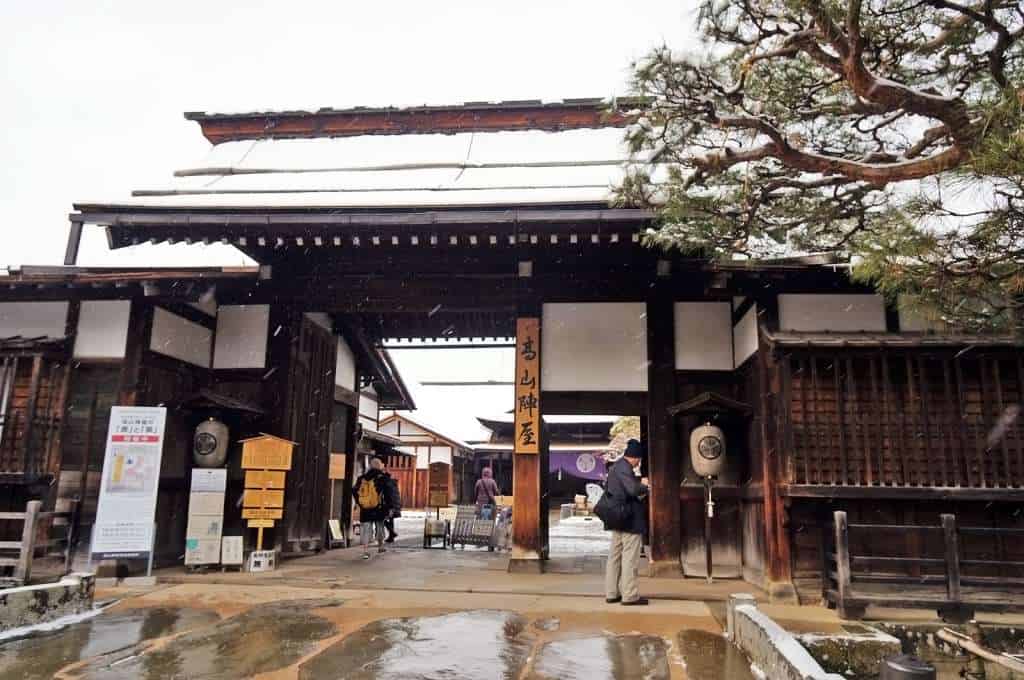
One of the most prominent features of the Tokugawa Shogunate during the Edo Period in the 1600s up to the 1800s is the Takayama Jinya, which served as a government office and residence of the government of that time. Its main duties are collecting taxes and conducting legal trials. It consists of staff offices, courtrooms, guest room, conference room, pantry, kitchen, garden, and a huge storehouse for the rice barrels as the tax payment.
Entrance Fee: ¥440 (Adult); FREE (highschool students and children)
Opening Hours: 8:45 AM – 5:00 PM (March – October) / 8:45 AM – 6:00 PM (August) / 8:45 AM – 4:30 PM (November – February)
Location: 1-5 Hachiken-machi, Takayama, Gifu, Japan (15-minute walk from Takayama Station)
Morning Markets
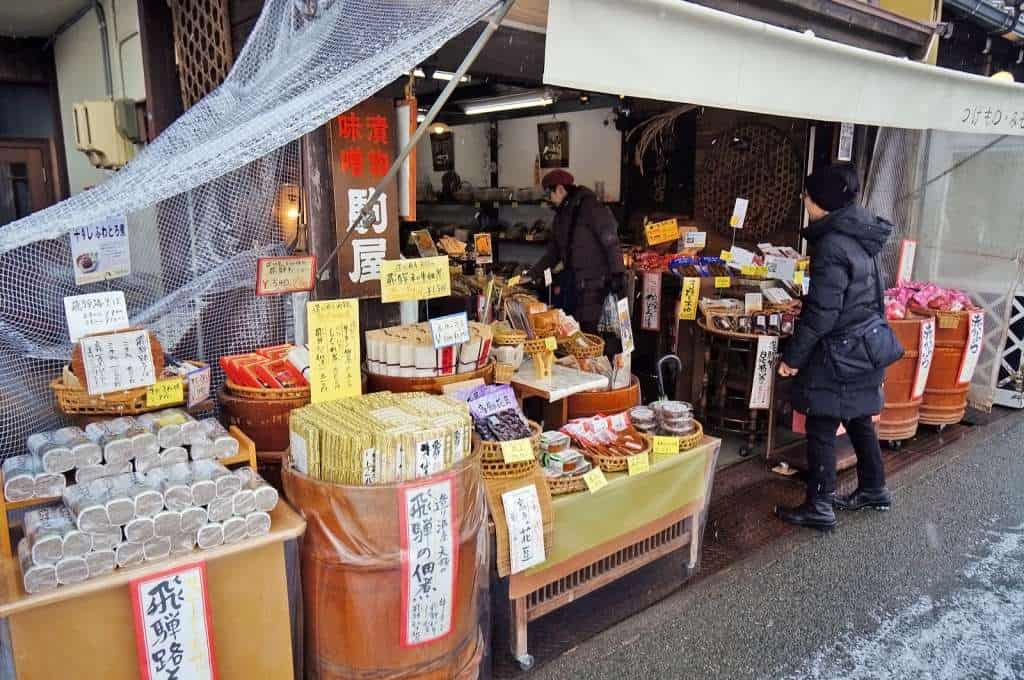
Morning markets had become an integral part of Takayama community throughout time. There are two popular morning markets in Takayama — Miyagawa Morning Market and Jinya-mae Morning Market. Miyagawa is located parallel the Miyagawa River while Jinya-mae is in front of the Takayama Jinya. The products sold are from the local farmers and artisans. Enjoy your morning stroll and interact with the locals. I had fun sampling products and shopping here!
Entrance Fee: FREE
Time: 7:00 AM – 12:00 NN (April – October) / 8:00 AM – 12:00 NN (November – March)
Location: Shimo-sannomachi, Takayama City (Miyagawa Market); 1-5 Hachiken-machi, Takayama City (Jinya-mae Market)
Crafts Experience Center
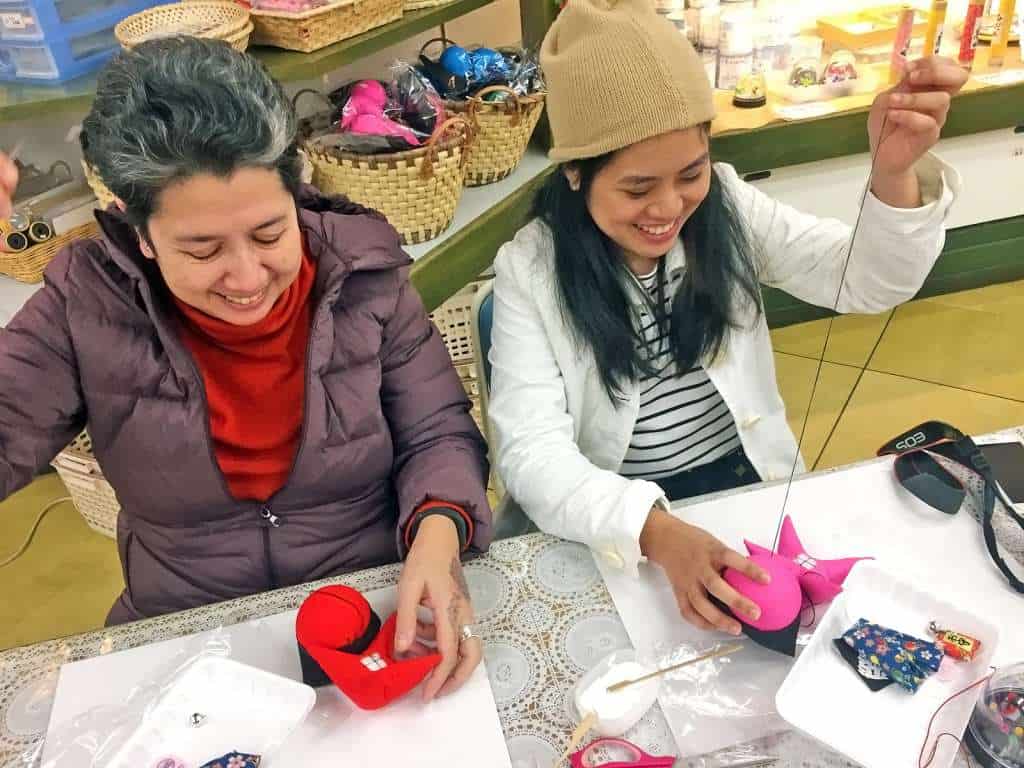
Experience hands-on activities here and test your skills in one or two crafts. There are ten different activities available: Sarubobo-making, rabbit doll-making, baking rice crackers, hanging charms, snow dome-making, Hida pottery-painting, Sarubobo bead strap-making, Sarubobo clay bell-painting, photo frame-making, and kaleidoscope-making. Walk-ins are welcome; no reservations needed.
Admission Fee: It depends on your chosen activity, but the fees range from ¥600 to ¥1,600
Opening Hours: 10:00 AM – 4:00 PM / CLOSED (Thursdays)
Location: 1-436 Kamioka Motomachi, Takayama City, Gifu, Japan
How to Get There: Take the Sarubobo bus from Takayama Nohi Bus Center. Alight at Hida no Sato bus stop.
Sake Brewery Tour
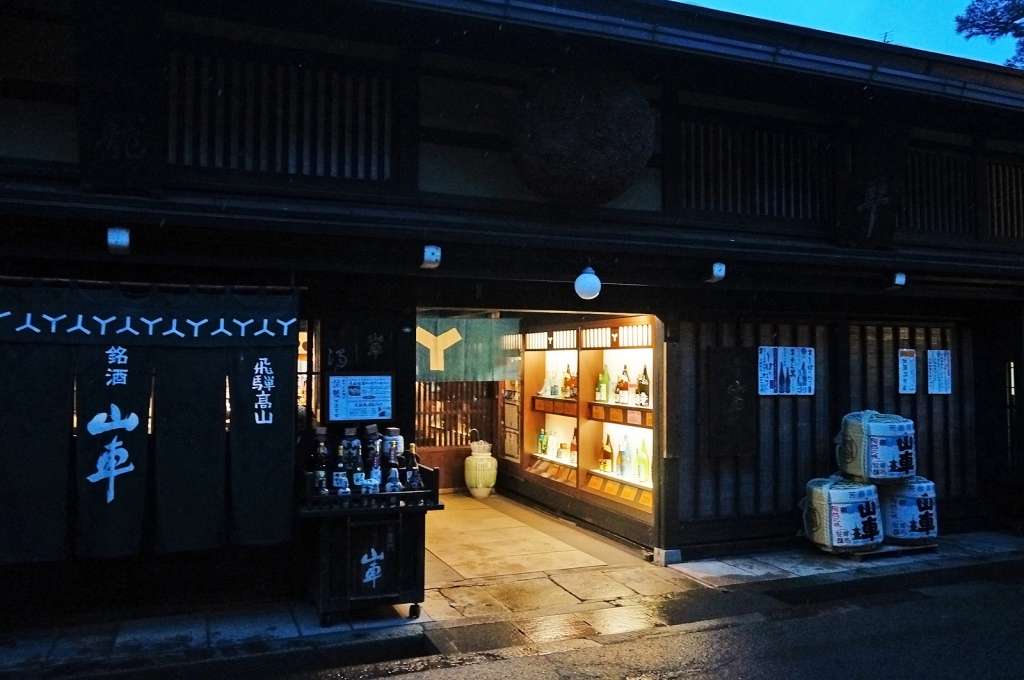
Takayama has the ideal conditions for sake-brewing: cold climate, the abundance of clean water, and the perfect kind of rice. For adults and sake-enthusiast, grab the opportunity to join the sake brewery tours for free! From January to March, seven local sake breweries participate and share their craft with the visitors. A guide will explain the process of brewing sake, and then you may sample the products after.
Admission Fee: FREE
Event Period: January to March
Opening Hours: 10:00 AM – 12:00 NN / 1:00 PM – 4:00 PM
Location: Takayama City, Gifu, Japan
Takayama Festival
The Takayama Festival is a biannual celebration where beautifully-crafted floats, representing each district of Takayama, are paraded around town. The first festival is held during springtime in April (Sanno Festival) while the second one is during autumn in October (Hachiman Festival). The Takayama Festival is included in the list of Japan’s Three Most Beautiful Festivals.
Entrance Fee: FREE
Festival Schedule: Sanno Festival (April 14 – 15) / Hachiman Festival (October 9 – 10)
Location: Takayama, Gifu Prefecture, Japan
Museum-Hopping
Being one of the historic places in Japan, Takayama City is laden with museums of many kinds – traditional festival floats, model traditional merchant houses, and arts and history.
- Hida Folk Village (Hida no Sato)
An open-air museum showcasing about 30 different old houses designs throughout the history of Hida Region. There are also hands-on activities such as stitching, painting on pottery, sarubobo-making, rabbit doll making, and many more.Entrance Fee: ¥700 (adults); ¥200 (middle and elementary students); cheaper if you’re a big group
Opening Hours: 8:30 AM – 5:00 PM
Location: 1-590 Kamioka Motomachi, Takayama City, Gifu, Japan
How to Get There: Take the Sarubobo Bus from Takayama Nohi Bus Center. Alight at Hida no Sato bus stop. - Festival Floats Exhibition Hall
It showcases in rotation some of the beautifully-made festival floats.Entrance Fee: ¥1,000 (Adult, for both halls)
Opening Hours: 8:30 AM – 5:00 PM (March – November) / 9:00 AM – 4:30 PM (December – February)
Location: 178 Sakura-machi, Takayama City, Gifu, Japan (15-minute walk from Takayama Station) - Kusakabe Heritage House
It’s the perfect representation of the traditional house architecture dating back to the Edo Period.Entrance Fee: ¥500
Opening Hours: 9:00 AM – 4:30 PM (March – November) / 9:00 AM – 4:00 PM (December – February)
Location: 1-52 Oshin-machi, Takayama City, Gifu, Japan (20-minute walk from Takayama Station)
Other Heritage Houses: Miyaji Heritage House, Matsumoto Heritage House, and Yoshijima Heritage House - Hida Takayama Museum of Art
A 3-star rated Michelin decorative art museum showcasing art nouveau and art deco pieces. It has a cafe, shop, garden, and restaurant.Entrance Fee: ¥1,300 (adults); ¥1,000 (senior high and university students); ¥800 (junior high and elementary students)
Opening Hours: 9:00 AM – 5:00 PM (double check schedule for mid-January to mid-March)
Location: 1-124-1 Kamiokamoto-cho, Takayama City, Gifu, Japan (20-minute walk from Takayama Station) - Other Museums: Sakurayama Nikkokan, Hirata Museum, Takayama Museum of History and Art, Takayama City Archives Museum, Takayama Honmachi Museum, Fujii Folkcraft Museum, Tea Ceremony Museum, Hikaru Museum, and many others.
Other Attractions
- Teddy Bear Museum
Entrance Fee: ¥600
Opening Hours: 10:00 AM – 6:00 PM (March – December) / 10:00 AM – 5:30 PM (January – February); always check and confirm schedule before going
Location: 3-829-4 Nishinoishiki-machi, Takayama City, Gifu, Japan (20-minute walk from Takayama Station) - Goshikigahara Forests
If you are into trekking and nature-tripping, this activity is right for you. Safely explore the forests under the supervision of a local guide.
Tour Rate: ¥9,000 (Reserve 10 days before your visit)
Duration: 7:00 AM – 4:00 PM (daily except Wednesdays from November to mid-May)
Location: 1147 Nyukawa-cho Hiyomo, Takayama City, Gifu, Japan - Hida Kokubun-ji Temple
This is the oldest temple in Takayama.
Entrance Fee: ¥300
Opening Hours: 9:00 AM – 4:00 PM
Location: 1-83 Sowa-machi, Takayama City, Gifu, Japan (5-minute walk from Takayama Station) - Higayishama Temple Area
The area has numerous Buddhist and Shinto temples.
Entrance Fee: FREE
Opening Hours: 24 hours
Location: Tensho-ji-machi, Takayama City, Gifu, Japan (20-minute walk from Takayama Station)
Attractions Near Hida-Takayama
Shinhotaka Ropeway
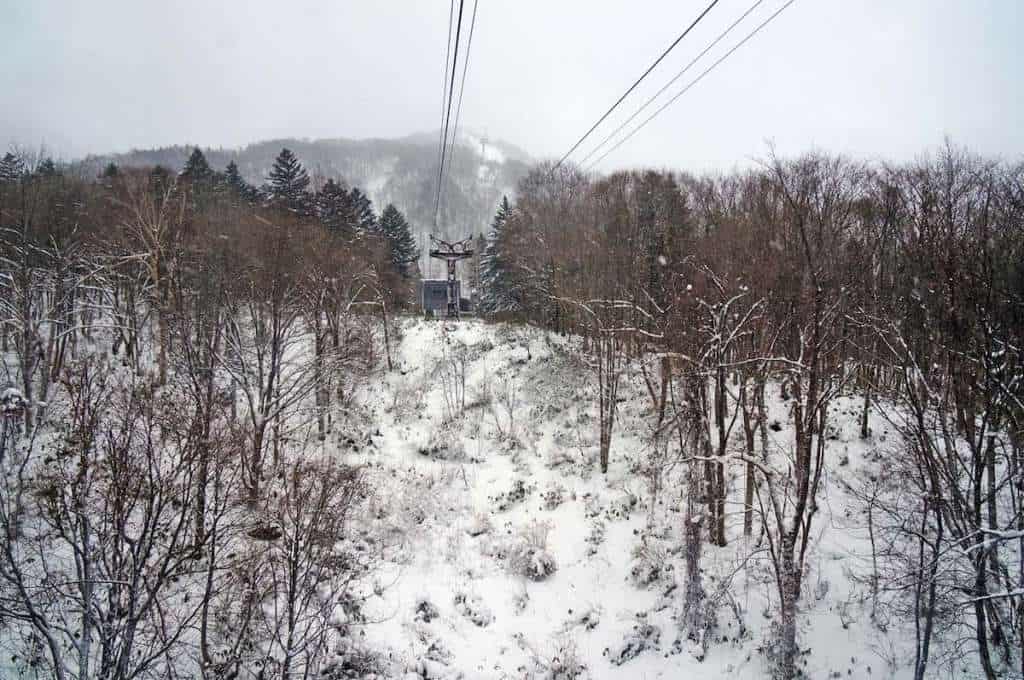
Shinhotaka Ropeway, as of writing, is the only ropeway in Japan with double-decker gondola. The scenic view got a 2-star rating in the Michelin Green Guide Japan. The whole area offers natural outdoor hot springs, observation decks, foot baths, exhibit gallery, restaurants and cafes, shops, and nature trail.
Ride Fee:
Ropeway 1 & 2: ¥2,900 RT; ¥1,600 One-Way (Adults) / ¥1,450 RT; ¥800 One-Way (Children)
Ropeway 1: ¥600 RT; ¥400 One-Way (Adults) / ¥300 RT; ¥200 One-Way (Children)
Ropeway 2: ¥2,800 RT; ¥1,500 One-Way (Adults) / ¥1,400 RT; ¥750 One-Way (Children)
Note: Group Fares are cheaper than individual fares. If your group is more than 20 people, go for the group fare. The fares may change without prior notice.
Opening Hours: 8:30 AM – 4:45 PM (April – November) / 9:00 AM – 4:15 PM (December – March)
Location: Shinhotaka Onsen, Okuhida Onsen-go, Takayama City
Getting There: Go to Takayama Nohi Bus Center. Take the bus via Hirayu/Shinhotaka Line. Alight at Shinhotaka Ropeway bus stop. Travel time is one hour and 30 minutes. The fare is ¥2,200.
Okuhida Onsen-go Villages
Just an hour bus ride from the city of Takayama is a group of onsen villages collectively known as the Okuhida Hot Spring Villages. Indulge in a relaxing and healthy trip to one of these hot spring villages: Hirayu Onsen, Shin Hirayu Onsen, Fukuji Onsen, Tochio Onsen, and Shinhotaka Onsen.
Getting There: Take a Hirayu/Shinhotaka bus from Takayama Nohi Bus Center. Alight at Hirayu Bus Terminal/Hirayu Onsen bus stop. Travel time is one hour. The fare is ¥1,600. (Note: Among the five villages, Hirayu Onsen is the one closest to Takayama city center.)
Hida Furukawa Old Castle Town
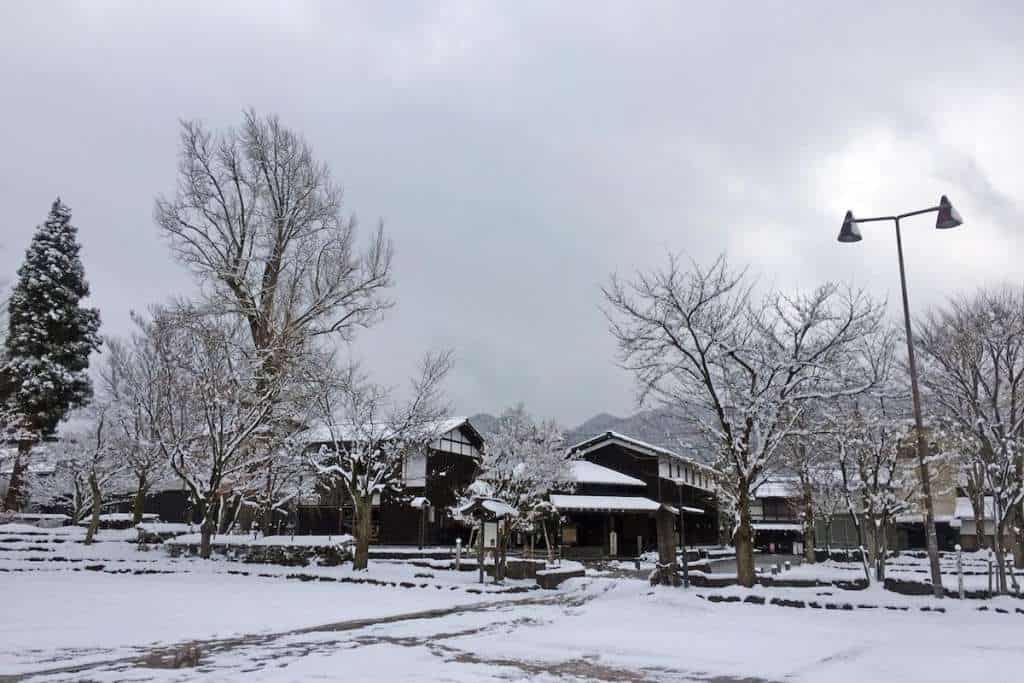
Getting There: From Takayama Train Station, take the JR Takayama Main Line. Alight at Hida Furukawa Station. Travel time is 16 minutes. The fare is ¥240.
Shirakawa-go
Getting There: Take the Shirakawa-go/Kanazawa Line of Nohi Bus going to Shirakawa-go from Takayama Bus Terminal and vice versa. Travel time is 50 minutes. A one-way ticket is worth ¥2,600 while roundtrip is ¥4,600.
If you’re coming from Nagoya and you want a hassle-free trip, day tour packages in Shirakawa-go and Takayama are available online.
Gokayama
Gokayama, like the nearby Shirakawa-go, is also recognized by UNESCO as a World Heritage Site for its Gassho-style houses. The village is located in Toyama Prefecture. To maximize your trip from Takayama to Gokayama, you may also do a combination of Shirakawa-go tour and Gokayama tour.
Getting There: Take the Shirakawa-go/Kanazawa Line of Nohi Bus going to Shirakawa-go from Takayama Bus Terminal. Take the Kaetsuno Bus from Shirakawa-go bus stop going to Suganuma or Ainokura (the popular Gassho-style villages in Gokayama) and vice versa. Suganuma bus stop is located along the main road near the entrance to the village, while Ainokura village entrance is five minutes on foot from the bus stop. A one-way ticket is worth ¥870 for Shirakawago-Suganuma route and ¥1,300 for Shirakawago-Ainokura route.
Note: There are also special bus tours for Shirakawa-go and Gokayama offered by bus companies such as Nohi Bus: Shirakawa-go and Ainokura Bus Tour & Shirakawa-go and Suganuma Bus Tour. A roundtrip ticket is worth ¥5,000 – 6,700 for adults and ¥3,600 – 4,500 for children.
If you are coming from Nagoya and traveling with kids and elders, consider joining a tour. This one is offering Gokayama Ainokura & Shirakawago Bus Tour.
What to Eat in Hida-Takayama
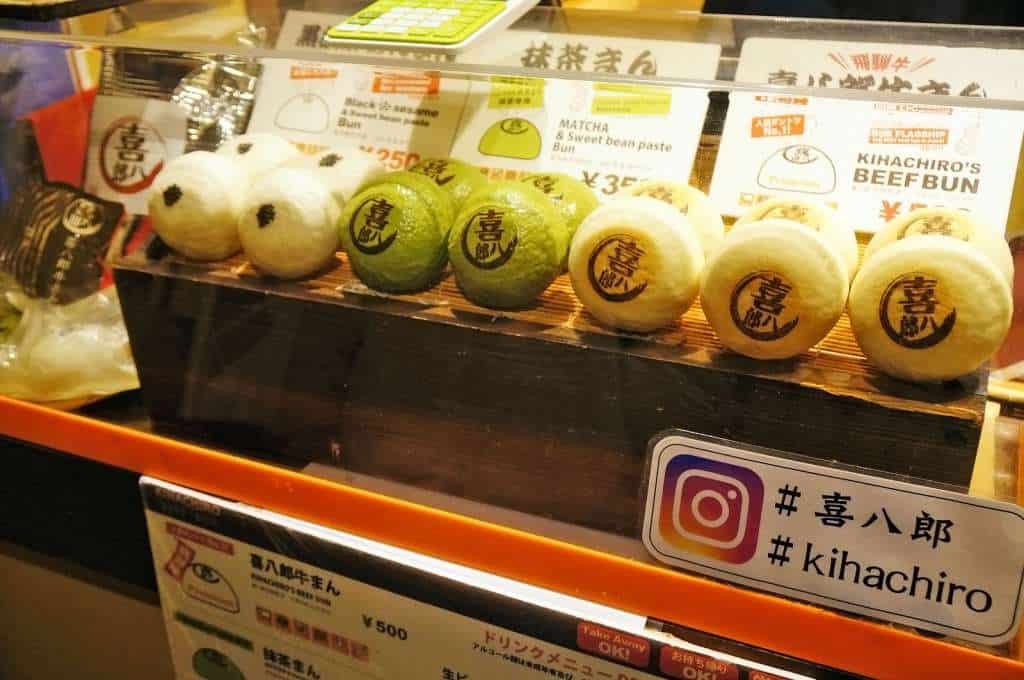
What we also love about Takayama is the convenience it provides tourists which stems from the well-thought-out layout of the city. It made touring the city an easy-breezy experience. The city’s strength is its accessibility. Tourist attractions, restaurants, shops, and accommodations are scattered around the city. You can find some of Takayama’s gastronomic gems within the city center. Ready? Here are Takayama’s must-try products.
- Hida Beef. Japan has excellent high-grade varieties of beef; one of those is the Hida Beef (Hida-gyu). It wouldn’t hurt splurging a little bit on your food for that pinkish, beautifully-marbled top-grade Hida beef, would it?
- Kihachiro Hida Beef Bun. Walking around Sanmachi led me to one of the most popular beef buns in Takayama. I got curious as I approach this small shop with people queuing for a beef bun, so I tried it. I got the bestseller, Premium Hida Beef Bun, for ¥500. Best food purchase!
- Sake. Takayama has been brewing sake for over four centuries already. Out of the numerous sake breweries, six have withstood the test of time and excelled. These six produce their own specialty products, each with its unique taste and trademark. These six sake breweries are Harada, Kawashiri, Niki, Hirase, Funasaka, and Hirata. Have a sample taste of their specialty products. Word of caution: you might purchase one after sampling it. ;)
- Hoba Miso. One of my favorite Takayama local specialties is the Hoba miso. Aside from its unique presentation during meals, the miso paste cooked with other ingredients on Hoba leaf or Magnolia leaf is a gift to my palate.
- Takayama Ramen. The locals love their ramen, and the numerous ramen restaurants around Takayama is proof of that. Two characteristics of Takayama ramen are its curly noodles and its soy sauce-based soup.
Sample Itinerary
Here’s a sample 6-day 5-night itinerary that covers Nagoya, Takayama, and Shirakawa-go. As always, make the necessary adjustments to match your preferences. Note that this itinerary assumes that:
- You are a pair, splitting the costs.
- You are allocating a budget of ¥6000 per night for your accommodation.
- You are allotting a ¥1000 allowance per meal.
- Airfare is not included in the costing.
DAY 1: ARRIVAL
06:30 AM – Chubu Airport to Nagoya: ¥1,250 (train fare)
07:00 AM – Arrive in Nagoya + Meitetsu Bus Terminal
07:30 AM – Breakfast: ¥500
09:00 AM – Nagoya to Hida-Takayama: ¥3,100 (bus fare)
11:30 AM – Hotel Check-in
12:00 PM – Explore Sanmachi on foot: FREE
01:00 PM – Lunch: ¥1,000
02:00 PM – Takayama Jinya: ¥430
03:00 PM – Continue exploring Sanmachi: FREE
06:00 PM – Dinner: ¥1,000
DAY 2: TAKAYAMA CITY TOUR
07:00 AM – Wake Up
07:30 AM – Miyagawa Morning Market
09:30 AM – Hida Folk Village: ¥700 + ¥210 (Sarubobo Bus Fare)
12:00 PM – Lunch: ¥1,000
01:30 PM – Teddy Bear Museum: ¥600
03:00 PM – Takayama Food Trip: ¥1,000
06:00 PM – Dinner: ¥1,000
DAY 3: DAY TOUR 1 – UNESCO WORLD HERITAGE SITES
07:00 AM – Wake Up
08:00 AM – Takayama to Shirakawa-Go: ¥4,600 (bus roundtrip fare)
12:00 PM – Lunch: ¥1,000
03:00 PM – Return to Takayama: PAID already
06:30 PM – Dinner: ¥1,000
DAY 4: DAY TOUR 2 – OKUHIDA HOTSPRING
07:00 AM – Wake Up
08:30 AM – Shinhotaka Ropeway: ¥2,200 + ¥2,900 (Bus Fare + Ropeway 1 & 2 Ticket)
12:00 PM – Lunch: ¥1,000
01:00 PM – Shinhotaka Onsen: ¥600 (Onsen Pass)
03:00 PM – Return to Takayama: ¥2,200
06:00 PM – Dinner: ¥1,000
DAY 5: NAGOYA
09:00 AM – Takayama to Nagoya (Bus), ¥3,100
11:30 AM – Hotel Check-in
12:00 PM – Lunch: ¥1,000
01:00 PM – Nagoya Castle & Meijo Park: ¥500
03:00 PM – TOYOTA Commemorative Museum, ¥500
05:00 PM – Sakae Downtown District + Shopping
08:00 PM – Dinner: ¥1,000
DAY 6: DEPARTURE
For this itinerary, this will set you back ¥33,890, excluding accommodation, airfare, taxes, and miscellaneous expenses. If you will include the hotel, each has to chip in ¥15,000 (¥6,000 x 5 nights, divided by 2 pax) or $138, P7100.
So, ¥33,890 plus ¥15,000 is ¥48,890 or make it ¥50,000 ($460, P23,670) per person. The prices and schedules may vary from time to time, so you need to make necessary adjustments based on your preferences and needs.
Other Tips for the Poor Traveler
- No smoking. Smoking in public, especially in historic and cultural areas, is prohibited.
- Do not litter. Be responsible and observe proper garbage disposal. The community has an ongoing effort (Take Garbage Home) to minimize waste.
- Free Wi-Fi. The city center offers free Wi-Fi service for one week. That’s good for seven days! Connectivity in some areas, however, may not be as good as the others. To access the free Wi-Fi, just select “Free Wi-Fi Takayama” and answer the questionnaire. Your ID and password will be sent to your email address. Log in using the ID and the password.
- Takayama Tourist Information Office. It is located outside Takayama train station. They communicate well in English and they can provide materials about the tourist attractions and activities in Takayama. These materials are also available in English.
- Be mindful of others. Don’t take too much time posing for photos to give others a chance to enjoy the views and attractions also. It is okay to get excited and be carried away, but don’t be too loud or rowdy.
- Be polite. Try to learn simple Japanese phrases. If you are using Nihongo to say thank you, don’t just say arigatou, but rather arigatou gozaimasu. The latter is more formal and polite. Sumimasen can mean excuse me or sorry.
If you’re planning a multi-city tour of Japan, check out our guide for that here:
This post is brought to you by the Chubu Transport Bureau.
2️⃣0️⃣2️⃣0️⃣ • 3️⃣ • 2️⃣9️⃣
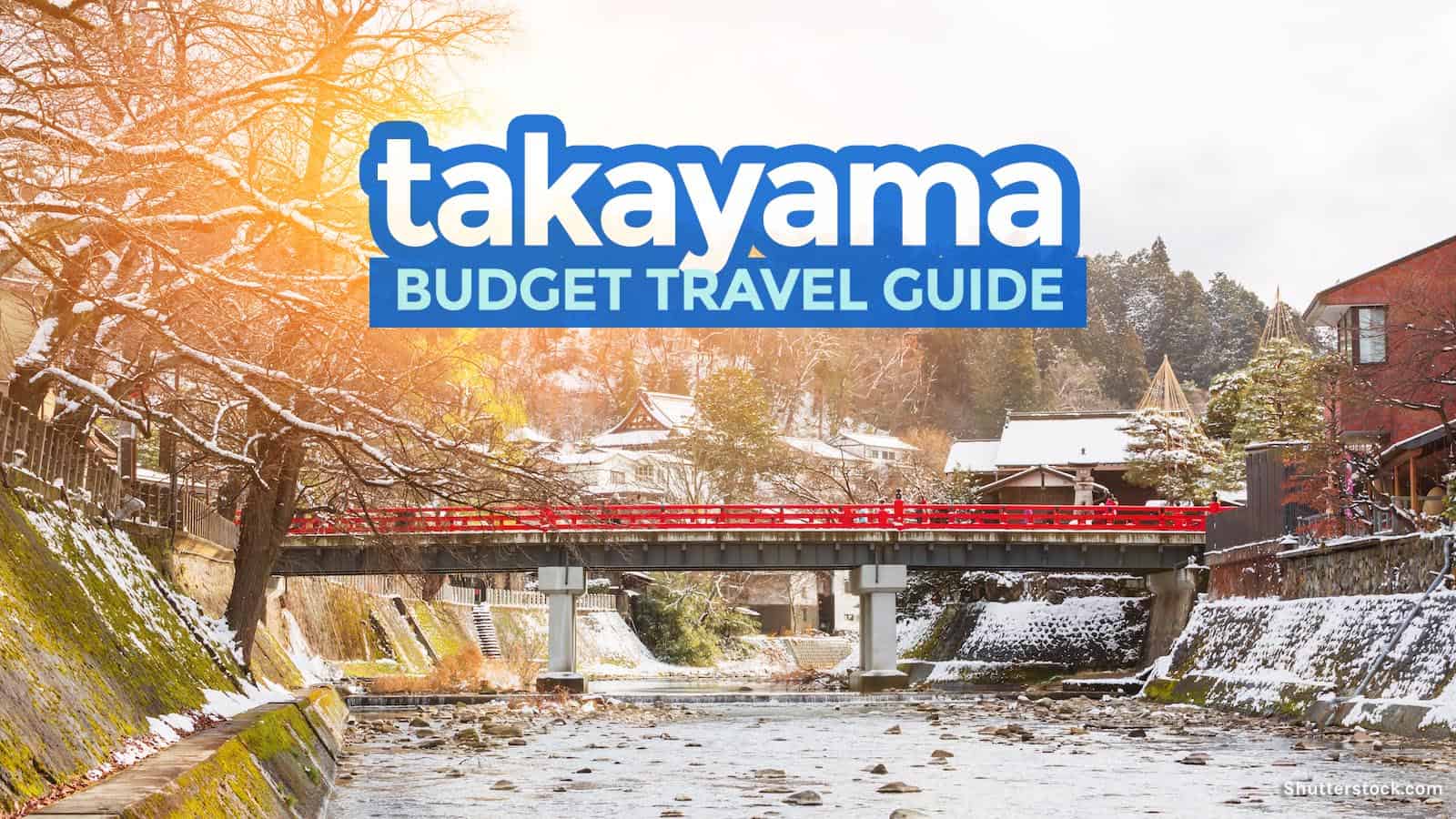


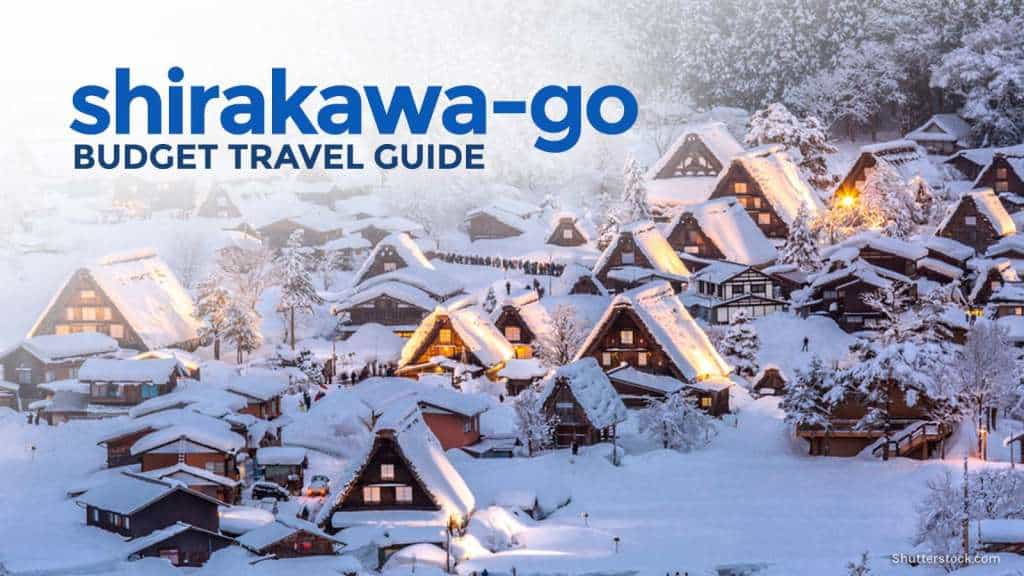























Wow thank you for this! Been searching for itineraries for hida takayama from manila and I’m glad ti stumble upon this. I’m planning to go solo though during winter to see the lights up and snow covered villages
Enjoy planning your trip! :)
This! Perfect for our 4 day trip to Nagoya and Takayama this coming Nov to Dec. Thank you for the detailed itinerary.